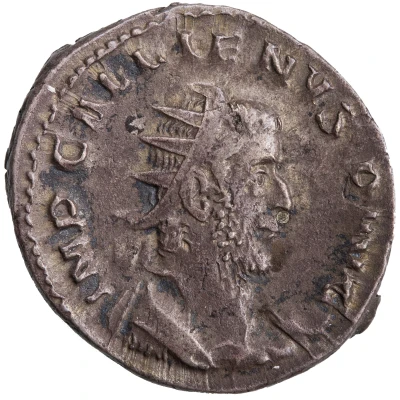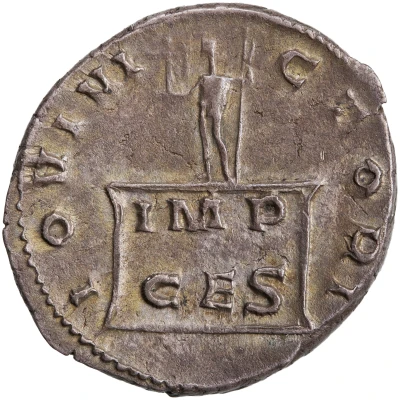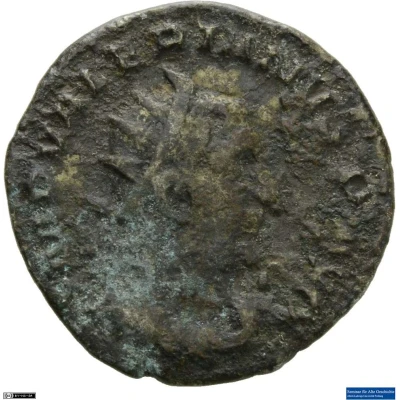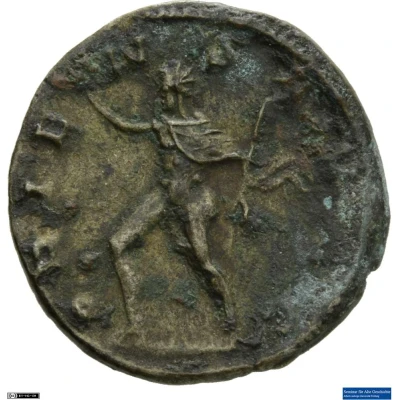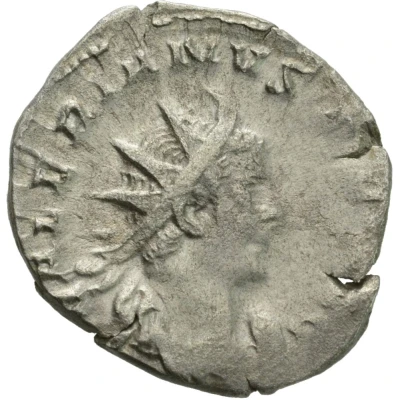
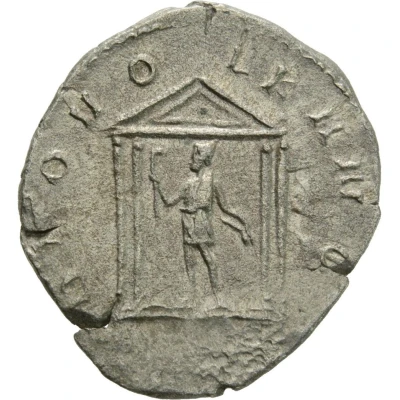

© Münzsammlung des Seminars für Alte Geschichte, Albert-Ludwigs-Universität Freiburg (CC BY-NC-SA 3.0 DE)
Antoninianus - Valerianus DEO VOLKANO; Vulcan
| Silver | 2.9 g | 22 mm |
| Issuer | Rome › Roman Empire (27 BC - 395 AD) |
|---|---|
| Emperor | Valerian (Publius Licinius Valerianus) (253-260) Gallienus (Publius Licinius Egnatius Gallienus) (253-268) |
| Type | Standard circulation coin |
| Years | 258-256 |
| Value | Antoninianus (1) |
| Currency | Antoninianus, Reform of Caracalla (AD 215 – 301) |
| Composition | Silver |
| Weight | 2.9 g |
| Diameter | 22 mm |
| Shape | Round (irregular) |
| Technique | Hammered |
| Orientation | Variable alignment ↺ |
| Demonetized | Yes |
| Updated | 2024-10-05 |
| Numista | N#285863 |
|---|---|
| Rarity index | 94% |
Reverse
Vulcan, draped, in temple, holding hammer in right hand and pincers in left hand; sometimes at his feet, anvil.
Script: Latin
Lettering: DEO VOLKANO
Translation:
Deo Volcano.
To god Vulcan.
Comment
Mass varies: 2.26–3.63 g;Diameter varies: 20–24.5 mm;
Example of this type:
American Numismatic Society (ANS)
Source:
Online Coins of the Roman Empire (OCRE)
Interesting fact
The Antoninianus coin featuring Valerianus (DEO VOLKANO; Vulcan) was issued during a time of great turmoil in the Roman Empire. The coin was minted in 258-256 AD, during the reign of Valerianus, who was known for his military campaigns against the Persians and his efforts to stabilize the empire's economy. Despite these efforts, the empire continued to face challenges, including inflation, corruption, and external threats. The coin's depiction of Vulcan, the Roman god of fire and volcanoes, may have been a symbol of the empire's resilience and determination to overcome these challenges.
